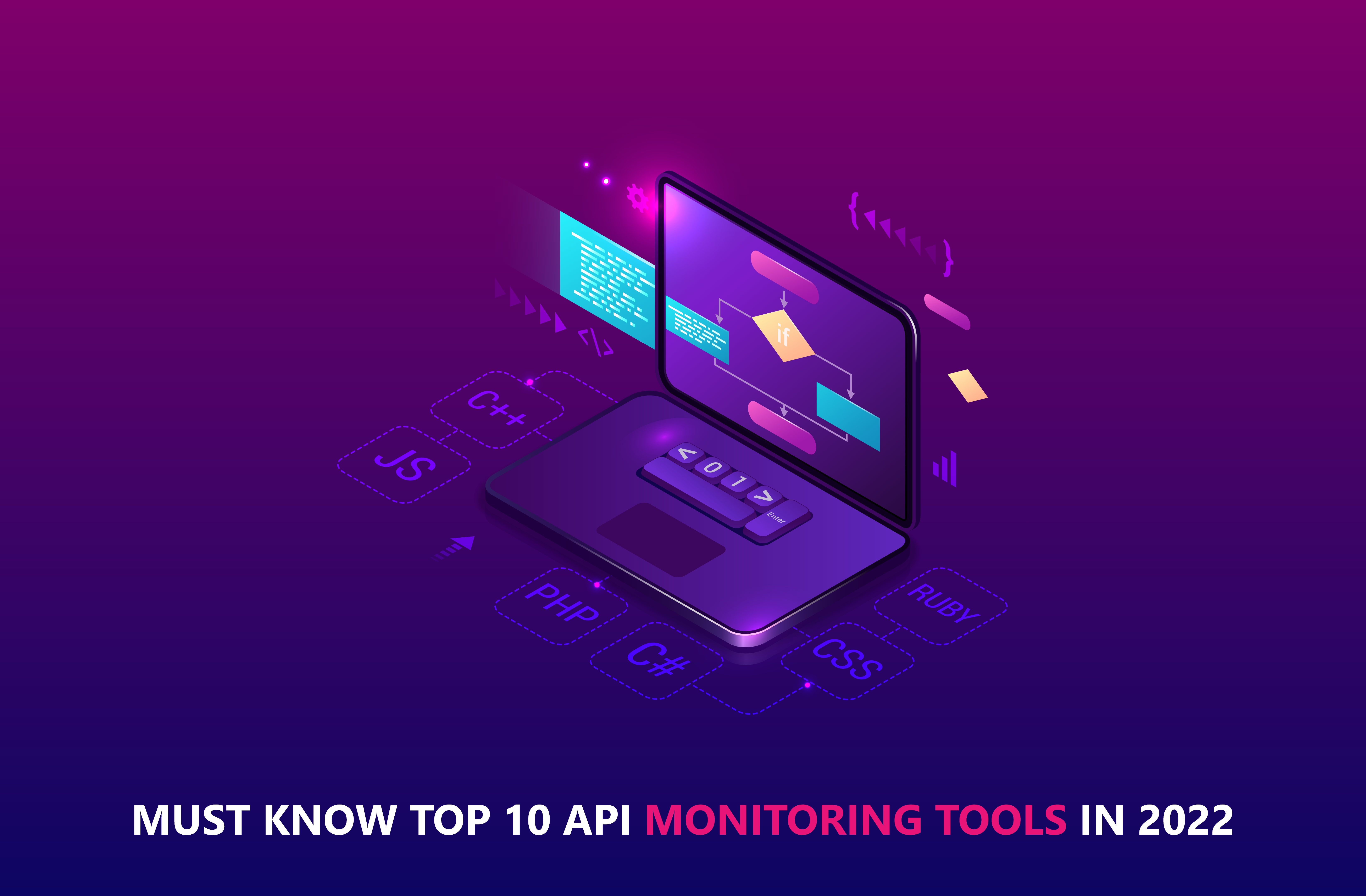APIs have evolved into one of the most important components of today's software systems. Because an API's unavailability affects some or all sections of dependent software systems, it's critical for development teams of all sizes to closely monitor their running APIs and act as soon as an abnormality is detected and reported by an API monitoring tool.
- Sematext
It's a cloud-based collection of system monitoring tools. Testing from multiple servers across the world is possible because it is an external service.
The Sematext system's synthetic modelling function will repeatedly run the APIs in the site across browsers or even make HTTP requests to isolate testing of certain APIs. If a problem occurs in the API's performance, an alert is raised, notifying the monitored website's system administrator.
Pros:
- Comprehensive alerting for both internal and external monitoring
- Subscription price flexibility as well as a pay-as-you-go option
- Allows for the deployment of changes in a sandbox environment by supporting test launch sites.
- Intelligent alert fatigue features and a well-designed alert system with numerous triggers.
Cons:
- There are better SSOs throughout the list.
- Runscope
You can define functional tests and schedule them to run in the background with Runscope. However, unlike Postman and Testfully, you can't aggregate several tests into a single monitoring task, so each test has to be scheduled independently, increasing your maintenance costs.
Pros for API monitoring
- Request chaining is supported by Runscope (multistep tests)
- A web-based dashboard provides information on each test that has been completed.
The Cons of API monitoring
- Runscope does not provide a free plan
- It can take a long time to set up JSON body validation for a request.
- For API monitoring, you can't combine many tests into a single schedule.
- For the last 100 successes and failures, Runscope saves the whole step (HTTP request/response) details.
- AlertSite
AlertSite offers some of the most in-depth REST API monitoring available. AlertSite has a unique and adaptable monitoring strategy. AlertSite uses technology that monitors both the API layer and the UI for functionality, application performance data, and availability, rather than being bogged down by a sea of notifications.
Pros:
- Monitors both the API and the UI for performance, user experience, and backend functionality in a unique way.
- A simple element selection tool allows non-technical users to monitor site elements.
- Simple pricing that is accessible to almost every team
Cons:
- Only works with Windows.
- There are no visual monitoring features in the interface.
- Could make it easier for teams to collaborate.
- Postman
Postman is one of the most popular REST monitoring and performance testing applications available, with over 10 million developers using it. It's compatible with Windows, macOS, and Linux platforms. Postman's popularity stems in part from its simple UI and ease of use. In addition to functional API testing, Postman may be used to monitor and manage applications and services.
Pros:
- It is completely free.
- Over 10 million users in a large supporting community
- Provides a straightforward approach for setting up notifications.
- Works well with popular apps like Slack and PagerDuty.
Cons:
- For new users, it might be rather technical and complicated.
- Many automation features are missing.
- Reporting capabilities are limited.
- Uptrends
Uptrends' API monitoring service is a multi-step solution for testing API performance, functionality, and availability. It is dependent on a dependable alerting system that sends out an alert whenever something goes wrong.
Uptrends can keep an eye on your API from anywhere in the globe and utilise private checkpoints to test your mobile app development service and web services behind your firewall. These on-premise private checkpoints might be virtual machines or actual servers that use Uptrends checkpoint software to monitor your intranet, online apps, and APIs.
Pros:
- It's a simple tool to use.
- Monitoring is feasible from a variety of locations across the world.
- A pre-configured, publicly accessible status page is provided at no extra charge.
Cons:
- The user interface isn't particularly appealing.
- Customer service is inadequate.
- There are a variety of features that can be hazardous.
- Dotcom-Monitor
You can use Dotcom-Monitor to maintain track of your API web app development services' functionality, availability, and performance. In your tests, you'll employ twenty-five different locations and seven different browsers. It's not difficult to set up. By calling a specific web function, you can evaluate the content, performance, and uptime of a REST or SOAP online service.
Pros:
- It's quite easy to use.
- A variety of monitoring options are available.
Cons:
- The setup is time-consuming.
- AppDynamics
It's a robust API monitor that comes as part of the Cisco product line. Inside AppDynamics, you'll find all of the powerful capabilities and insights you'd expect from a Cisco product. Real-time data visualisation is among the most effective and concise available. Is there a single dashboard? Everything you need is in AppDynamics, and nothing you don't.
Pros:
- One of the best REST monitoring live visualizations
- Root cause analysis aids techs fast and improves over time.
- Features are intended to be as proactive as possible to reduce downtime.
- Enterprise-oriented
- Excellent user interface
Cons:
- The trial may take longer than expected.
- For smaller teams, the annual cost may be prohibitive.
- More tutorials or training could help to flatten the learning curve.
- Bearer
A bearer is an API monitor with a variety of features that may be used to give automated warnings for a variety of applications. Bearer's easy installation is one of my favourite features. The bearer can be unpacked and ready to use with just one line of code, requiring no changes to the code or environment.
Pros:
- Designed primarily for monitoring REST APIs, with no unnecessary features or frills
- The platform is user-friendly thanks to its simple UI.
- Uncomplicated monthly price
- Designed for small to medium-sized groups
- Deployment is really simple and quick.
Cons:
- It's possible that it's not the ideal fit for larger groups.
- Dashboards may use some work, particularly when it comes to displaying many apps on one screen.
- Atatus
Atatus is one of the most powerful monitoring solutions on the market today. It keeps track of all requests made to your apps without requiring you to update your source code. You'll see how your methods, database statements, and external requests affect the experience of your users.
It keeps track of application, browser, and infrastructure performance. To see and obtain data, Atatus uses a RESTful API. To get data from the application, browser, or infrastructure monitoring, you'll need to use certain API keys provided by Atatus.
Pros:
- The most cost-effective APM on the market
- The user interface is simple to comprehend.
- It provides a comprehensive monitoring report.
- The setup is simple.
- Integration is completed in a timely and error-free manner.
Cons:
- No, not yet.
- Data Dog Synthetics
Synthetic monitoring is one of the products offered by DataDog in the monitoring and security arena, and it allows you to monitor your websites, web apps, and APIs. It uses API Tests, Multistep API Tests, and Browser Tests to track web pages and APIs at any network level in a controlled and stable manner.
Pros:
- Multistep tests are available with DataDog synthetic monitoring (Chained requests). For instance, you could use the multistep test to authenticate first and then send the main request to your API using the token.
- You can reuse values in several tests by using globals.
- Every 30 seconds, you can conduct monitoring checks.
Cons
- DataDog does not offer a free plan for synthetic monitoring.
- Because you can't combine many tests into a single monitoring task, you'll need to set up numerous monitors if you wish to run multiple tests at the same time.
- When a test fails, the response headers and body of the request become exposed, but there is no way to examine the response when the test succeeds.
- Checkly
Checkly is a robust monitoring tool that we recommend if you're seeking one. Create requests, assertions, scripting, configuring global environments, scheduling alarms, executing a group of checks simultaneously, maintenance window, status page, variables, and check defaults are just a few of the tools available for monitoring your APIs.
Pros:
- Checkly offers a free developer plan.
- Global variables can be defined and used in API monitoring checks. You can also lock them to restrict who has access to them.
- You can set up API check alerts.
- Checkly interfaces with a variety of services for better and more flexible alerting, including Slack, Webhook, Discord, PagerDuty, Email, SMS, and more.
- When you have scheduled downtime for release or maintenance, you can disable your checks using the maintenance window.
Cons:
- Checkly allows you to perform a set of checks in one go and allows you to share warnings and assertions for the same group of tests. However, it does not enable group scheduling, so you must establish schedules for each check individually.
- Multi-step (chained) queries are not supported by Checkly. We can still use it for this purpose because it enables scripting (writing javaScript code).
Final Thoughts
Choosing API monitoring tools can help everyone from DevOps to engineers, product managers, and business owners, regardless of whether they need a basic devops service or something more complicated.



